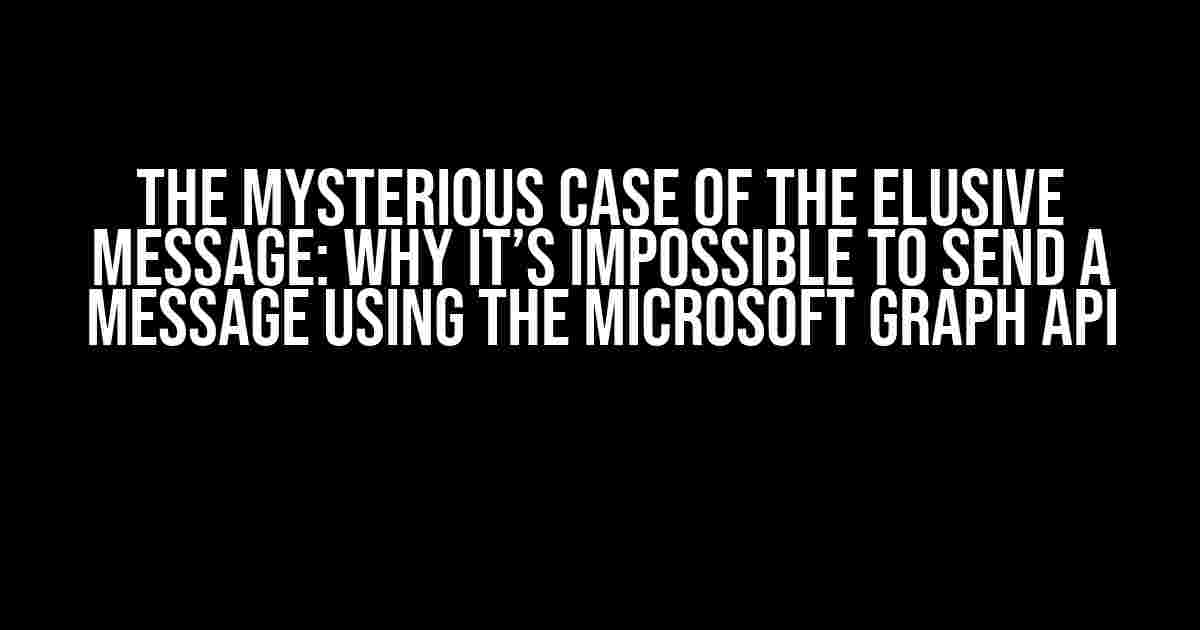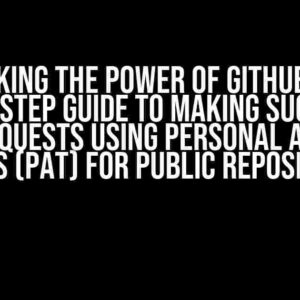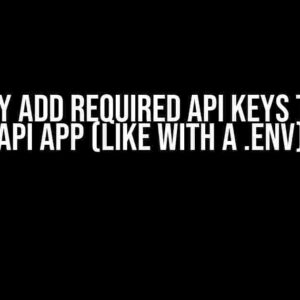Have you ever found yourself staring at a cryptic error message, wondering why on earth you can’t send a simple message using the Microsoft Graph API? You’re not alone! In this article, we’ll delve into the reasons behind this frustrating phenomenon and provide you with the solutions you need to get your messages flowing like clockwork.
The Microsoft Graph API: A Brief Introduction
The Microsoft Graph API is a powerful tool that allows developers to access and manipulate data from Microsoft services like Azure Active Directory, Office 365, and more. With its vast array of endpoints and permissions, it’s the perfect solution for building integrations and automating tasks. Or so it seems…
The Problem: Impossible to Send a Message
One of the most common issues developers face when working with the Microsoft Graph API is the inability to send messages. You’ve written the code, set up the permissions, and even triple-checked the documentation, but still, the message refuses to budge. It’s as if the API is playing a cruel joke on you, taunting you with its cryptic error messages and leaving you scratching your head.
Theories and Troubleshooting
Before we dive into the solutions, let’s explore some of the common theories behind this issue:
- Permission Issues: Did you forget to grant the necessary permissions to your application? Perhaps you didn’t configure the scopes correctly, or maybe you overlooked a crucial permission that’s required for sending messages.
- Authentication Fails: Are you using the correct authentication method? Maybe your access token is invalid, or you’re using the wrong client ID.
- Endpoint Errors: Did you mistype the endpoint URL or neglect to include the necessary query parameters?
- Rate Limiting: Have you exceeded the API’s rate limits, causing your requests to be throttled?
While these theories are plausible, they’re often not the root cause of the issue. In this article, we’ll explore the real reasons behind the problem and provide you with actionable solutions.
The Root Cause: Microsoft Graph API Restrictions
The truth is, the Microsoft Graph API has certain restrictions in place that prevent you from sending messages using its endpoints. These restrictions are not always clearly documented, leaving developers frustrated and confused.
One of the primary reasons for these restrictions is to prevent spam and abuse. Microsoft wants to ensure that its APIs are not exploited by malicious actors, and as such, it has implemented certain limitations on the types of messages that can be sent.
Another reason is to promote the use of more specialized APIs, like the Microsoft 365 Mail API, which is designed specifically for sending emails and provides more advanced functionality.
Solutions and Workarounds
Now that we’ve covered the reasons behind the issue, let’s explore some solutions and workarounds to help you send messages using the Microsoft Graph API:
Use the Microsoft 365 Mail API
If you need to send emails, the Microsoft 365 Mail API is the way to go. This API provides a more comprehensive set of endpoints for managing email, including the ability to send messages.
POST https://graph.microsoft.com/v1.0/me/mailFolders/{mailFolderId}/messages
{
"subject": "Hello from the Microsoft 365 Mail API!",
"body": {
"contentType": "HTML",
"content": "This is the body of the email."
},
"toRecipients": [
{
"emailAddress": {
"address": "[email protected]"
}
}
]
}
This API is specifically designed for sending emails, and as such, it provides more advanced features and better support for email-related tasks.
Use the Microsoft Graph API with the mail.send Permission
While the Microsoft Graph API can’t be used to send arbitrary messages, you can use it to send messages on behalf of a user who has granted your application the mail.send permission.
POST https://graph.microsoft.com/v1.0/me/sendMail
{
"message": {
"subject": "Hello from the Microsoft Graph API!",
"body": {
"contentType": "HTML",
"content": "This is the body of the email."
},
"toRecipients": [
{
"emailAddress": {
"address": "[email protected]"
}
}
]
}
}
This approach requires the user to grant your application the necessary permission, which can be done through the Azure AD consent flow.
Best Practices and Conclusion
In conclusion, sending messages using the Microsoft Graph API can be a challenging task, but by understanding the underlying restrictions and using the correct APIs and permissions, you can overcome these obstacles.
Remember to:
- Choose the right API for your use case (e.g., Microsoft 365 Mail API for email-related tasks)
- Configure the necessary permissions and scopes for your application
- Use the correct authentication method and endpoints
- Avoid rate limiting by implementing pagination and caching
By following these best practices and staying informed about the latest API updates, you’ll be well on your way to sending messages like a pro!
| API | Endpoint | Permission |
|---|---|---|
| Microsoft Graph API | /me/sendMail | mail.send |
| Microsoft 365 Mail API | /me/mailFolders/{mailFolderId}/messages | Mail.ReadWrite |
We hope this article has provided you with the necessary insights and solutions to overcome the challenges of sending messages using the Microsoft Graph API. Happy coding!
Frequently Asked Question
Stuck with sending a message using the Microsoft Graph API? Don’t worry, we’ve got you covered! Here are some frequently asked questions to help you troubleshoot the issue.
Why am I getting a 401 Unauthorized error when trying to send a message using the Microsoft Graph API?
This error usually occurs when the Azure AD application doesn’t have the necessary permissions to send messages on behalf of the user. Make sure to grant the `Mail.Send` permission to your application and also ensure that the user has granted consent for the application to send messages.
What’s the deal with the “The request is unauthorized” error when I try to send a message?
This error can occur when the token used to authenticate the request is invalid or has expired. Check that your token is valid and hasn’t expired. If you’re using the OAuth flow, make sure to handle token refreshes correctly.
Why does my request keep getting “Bad Request” errors when I try to send a message?
This error usually indicates that there’s an issue with the request payload. Verify that the recipient’s email address is in the correct format and that the message body is properly formatted according to the Microsoft Graph API’s requirements.
Do I need to have a specific Microsoft Azure subscription to use the Microsoft Graph API to send messages?
No, you don’t necessarily need a specific Azure subscription to use the Microsoft Graph API. However, you will need an Azure AD tenant and an Azure AD application registered to use the API.
Are there any throttling limits I should be aware of when sending messages using the Microsoft Graph API?
Yes, there are throttling limits in place to prevent abuse of the API. The default limit is 10 messages per second per user. You can request a limit increase if your application requires higher throughput. Be mindful of these limits to avoid getting your requests blocked.



